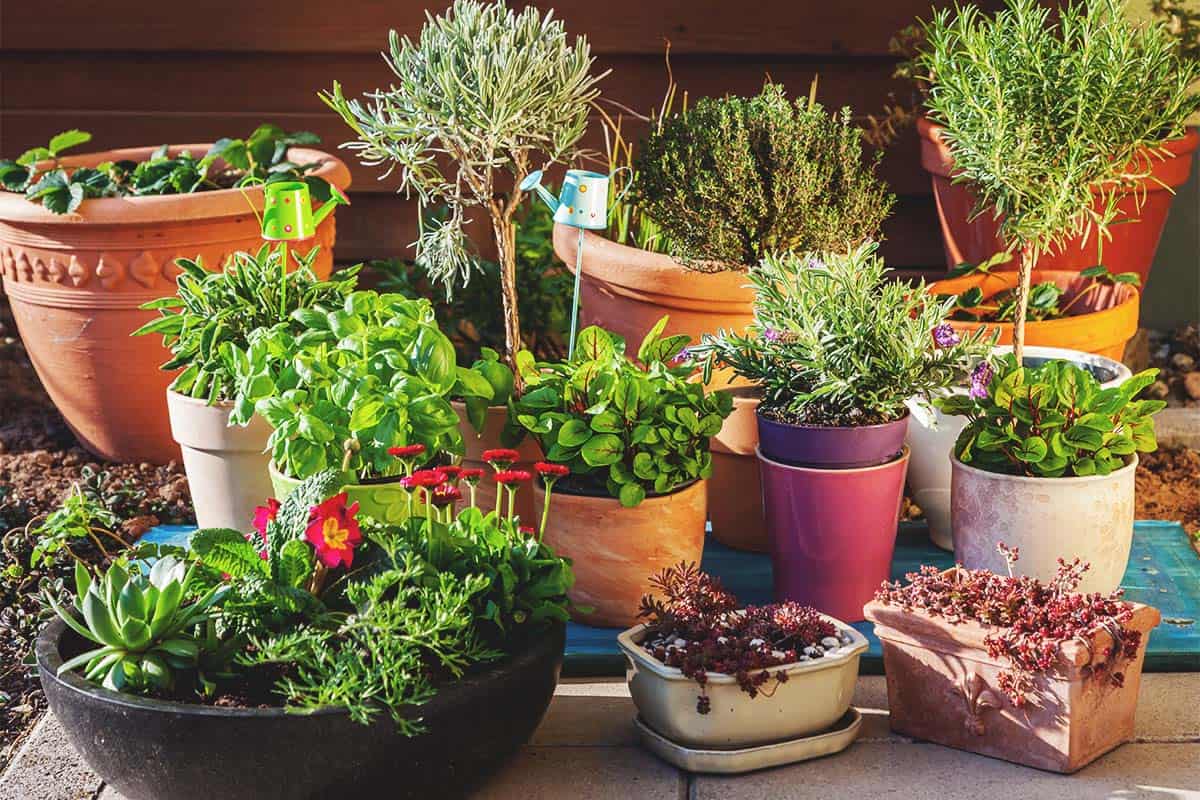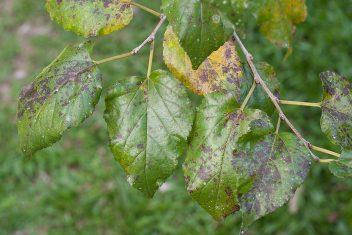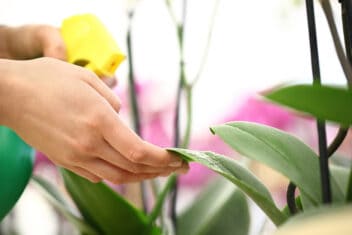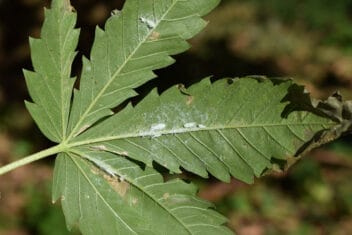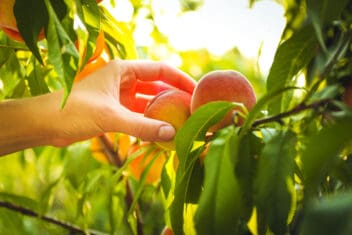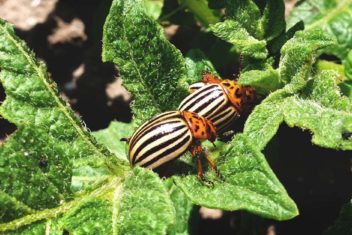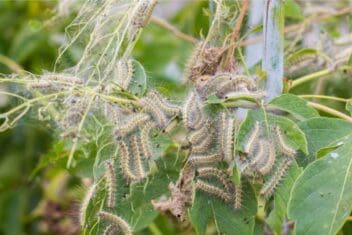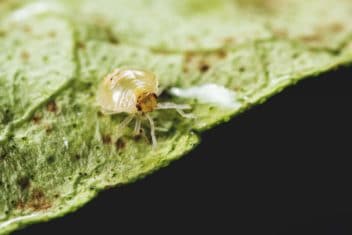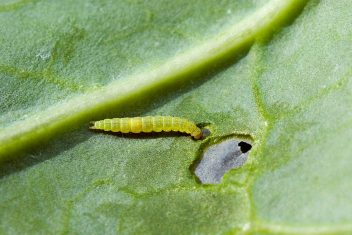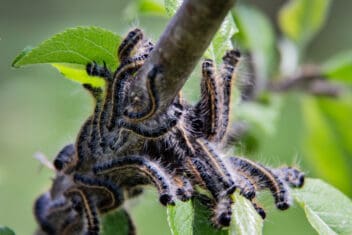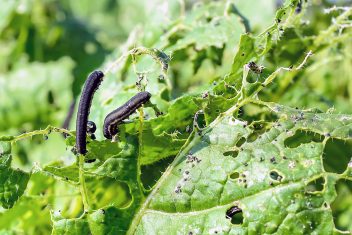It’s an aggravation every gardener faces. You check out your potted plant and, upon investigation, you discover ants and thousands of eggs in the pot.
Sometimes you see the critters coming and going, and other times you might only see evidence of their presence.
Either way, discovering an ant nest in your potted plants is frustrating, so it’s important to figure out why this happens and what to do to avoid it.
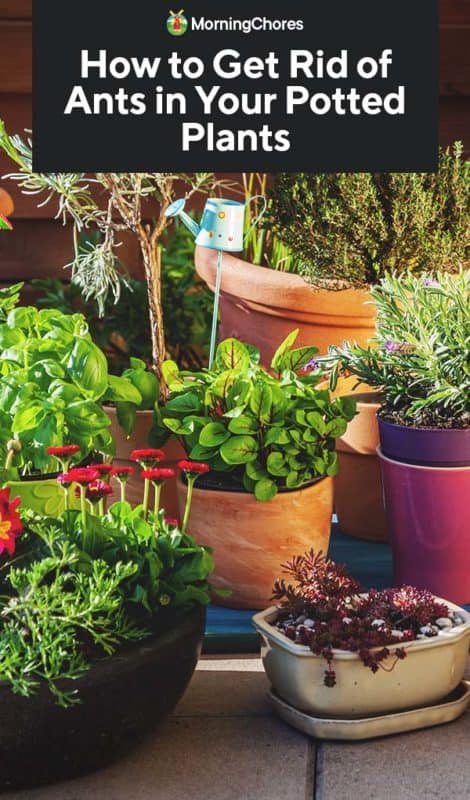
Why Are Ants Attracted to Potted Plants?

The simple answer is that they’re just trying to survive. Potted plants provide ants with food, shelter, and warmth. But of course, there’s more to it than that.
Ants aren’t usually after your plants. Often an ant infestation coincides with other insect pests attacking the plant above soil level, or they’re looking for somewhere hospitable to hang out. But an infestation can indicate that your plant isn’t as healthy as it should be.
Also, ants probably aren’t making a potted plant their home base. The likely have a main nest somewhere else, so your job is to encourage them to go there instead.
Let’s look at some of the reasons ants might decide to visit your potted plants.
Pest Insects
Aphids, mealybugs, whiteflies and soft scale insects all produce honeydew. This is a sticky sweet excretion that ants find appealing. If you have an ant infestation in your potted plants, it may be because pests are feeding them.
Inconsistent Watering/Dry Soil
I returned home from a holiday in summer to find a massive ant infestation in one of my potted plants. The pot had dried so much that the soil shrunk due to dehydration, making it the perfect environment for an ant colony.
You don’t even have to be away from home for this to happen. If you’re watering is inconsistent and the soil gets dehydrated, ants will come knocking.
Dry potting mix can also happen when some of the soil has escaped through the bottom of the pot and air has gotten in, drying things out.
Old Potting Mix
Commercial potting mix often becomes a water repellent. Over time, it dries out and water can’t soak in. This is what’s called becoming hydrophobic. Water should seep around the edges of your plants and out the bottom.
Instead, the water runs straight through without soaking in, which creates a hospitable environment for ants in the soil.
Transferred by You
Ants often take up residence in compost because there’s food in there for them or it’s dry and warm. Then, you transfer the compost to your pot as mulch or fertilizer and you introduce them to their new home in your pot.
How to Get Rid of Ants in Potted Plants
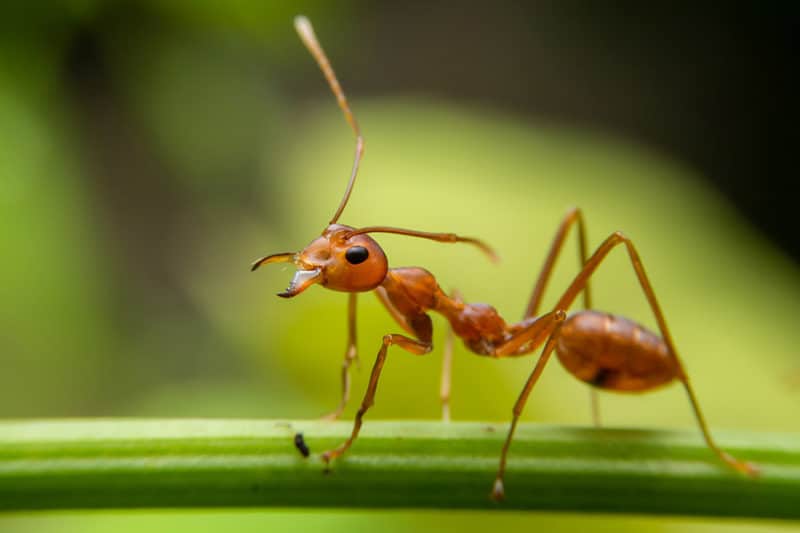
For each problem above there are chemical solutions and natural solutions. Both can work equally well, so it depends on what your needs and goals are.
Eliminate Pests
First, get rid of the insects providing the ants with honeydew to eat. Use an insecticidal soap or pyrethrum spray.
If you have honeydew, you need to wash the plants or ants will keep returning. You need to remove the honeydew to prevent mold.
For a small plant, spray and wipe the leaves down with a soft cloth. For bigger plants or bad infestations, tilt the plants and pour soapy water on them and then rinse.
Soak the Soil
If dry soil is the problem, give your plants a good soak. If the plant is indoors, first take it outside or put it inside of a large plastic container.
Then, mix a solution of 3 tablespoons of insecticidal soap with one quart of water. Make enough to fill the container. Pour the solution onto the soil until it overflows out of the original pot. Leave everything to soak for 30 minutes. Pour out any excess.
Replace the Soil
Sometimes all you can do is replace the soil. Remove the plant from the pot and set aside, but be careful as you will have an entire ant colony running in all directions. Move the pot to a location where this won’t cause a problem.
Gently remove as much of the soil around the roots of the plant as possible using your hands, a brush, and a gentle spray of water.
Empty the pot of all soil and scrub clean if necessary.
Replant back into the pot with new potting mix and water with the insecticidal soap mixture.
From this point on, keep the plant healthy and well-watered.
Natural Deterrents
Ants don’t like citrus. Boil the skin of six oranges in water for half an hour, then blend everything together to make a paste. Pour this around the plant in the pot.
You can also make a peppermint deterrent. Add a tablespoon of dish soap to a pint of water and several drops of peppermint oil. Pour this solution around the base of the plant. You may need to do this several times before all ants are gone completely.
Other things ants don’t like are:
- Coffee grounds
- Tea leaves
- Mint
- Cinnamon
- Cloves
- Chili powder
Make a mixture using any of these and place around the soil to ensure the plant pot becomes inhospitable.
Diatomaceous Earth
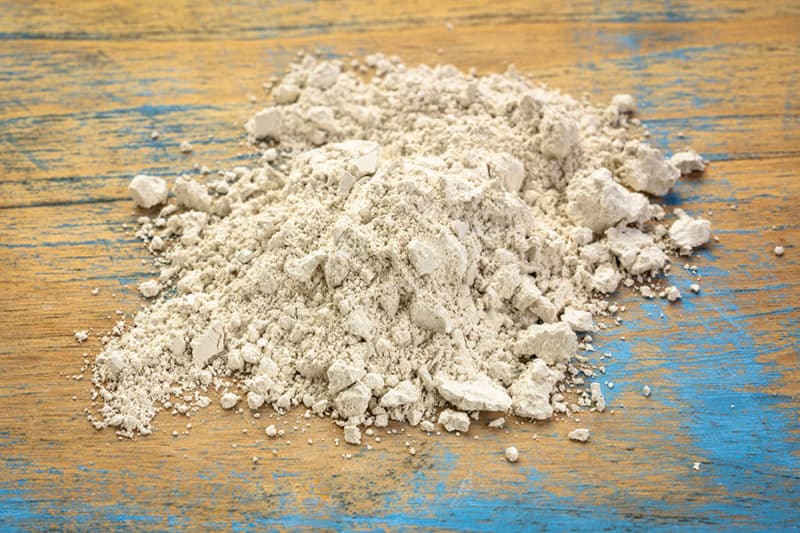
In my opinion, diatomaceous earth (DE) is the most effective remedy and preventative measure you can use.
Spread a thin layer of DE over the surface of dry soil. Both the soil and the DE need to be dry to be effective, as you want the DE to dehydrate the ants.
Bait
This isn’t my favorite solution. However, it may be necessary to get control over a large infestation.
Place bait around the potted plant and leave for the ants to consume. Ants usually eat the bait and die either in the nest or nearby. Then, they’ll be eaten by other ants who will also die.
Be aware not to let children and pets get into the bait as it’s toxic.
White Vinegar
I poured a liter bottle of vinegar into a particularly stubborn ants nest in one of my large pots. They left straight away. Be wary of this method though. Some plants can die from the acidity of the vinegar.
Preventative Measures
Prevention is much better than finding a cure, so remember the causes of infestations.
- Don’t let your potting mix be consistently dry.
- Replace the mix in the pot every couple of years
- Soak the mix if you think it has become a water repellant
- Watch for and eliminate pest insects, especially those that excrete honeydew.
Ants are beneficial to your garden and plants. They prey on destructive insects, so don’t make your goal to kill all ants. You want them out of your potted plants for the sake of the plant itself.
Often ants get into neglected plants, so take care of your plants to avoid infestations and ensure you remove any unwanted plants swiftly, rather than letting them die off in a pot.
Use Pot Feet
The worst infestations of ants I’ve had have been when the pot sits directly on the ground or deck. Use feet to lift the pot above the surface. This ensures good airflow to the bottom of the pot.
Essential Oil
Place the pot in a saucer or larger container and pour water into the base container. Add a good amount of essential oil like peppermint. You can also use citrus or cinnamon oil as well.
You’re effectively creating a water barrier between the entrance to the pot and the ant.
The Bottom Line
Ants can be an irritating problem in your potted plants, so keep an eye out for their presence. Don’t wait to deal with an infestation because their numbers grow exponentially rapidly.
That said, it’s not impossible to get rid of ants in your potted plants once you know what to look for and how to deal with the underlying issue.
